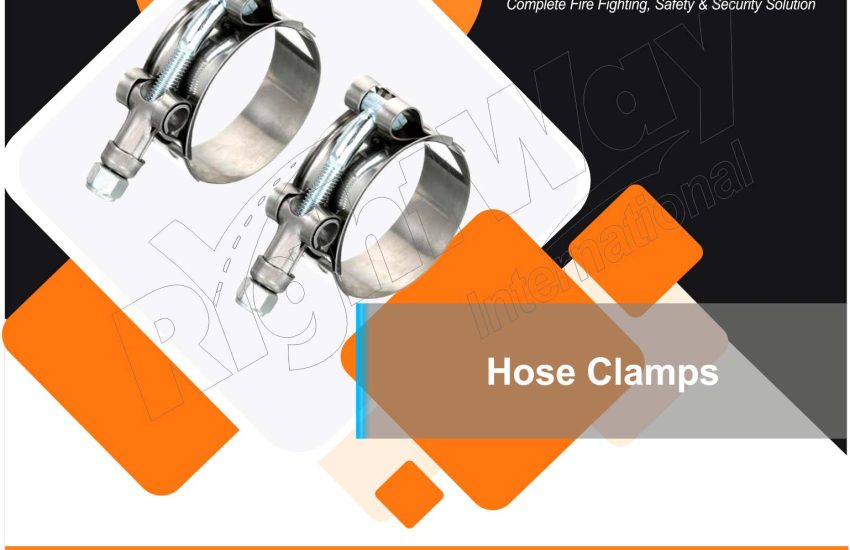Hose clamps are simple yet crucial devices that secure hoses onto fittings or nozzles, ensuring a tight seal to prevent leaks. Various industries, including automotive, plumbing, and manufacturing, widely utilize them for reliable fluid transfer.
What are Hose Clamps?
Hose clamps are mechanical devices that encircle a hose and create a tight seal around it when fastened. They come in various designs and materials, making them suitable for a wide range of applications.
Types of Hose Clamps:
- Screw Hose Clamps: This common type features a metal band that tightens around the hose when someone turns a screw. They provide adjustable pressure and can accommodate different hose sizes.
- Spring Hose Clamps: Made from a spring material, these clamps automatically adjust to the diameter of the hose as it expands or contracts. Many people commonly use them in automotive applications because of their reliability.
- Ear clamps feature two ears that pinch together to secure the hose. Mechanics often use them in automotive and industrial applications, and they require special tools for installation.
- T-Bolt Clamps: These clamps use a T-bolt for tightening and are ideal for high-pressure applications, such as turbocharger hoses. They offer enhanced clamping force and stability.
- Worm Gear Clamps: Similar to screw clamps, these use a worm gear mechanism to tighten the clamp. They are versatile and can be used for various hose types and sizes.
Key Features:
- Material:Manufacturers typically make hose clamps from stainless steel, galvanized steel, or plastic, each offering different levels of corrosion resistance and strength.
- Adjust-ability: Many hose clamp are adjustable, allowing for a precise fit around the hose, accommodating different diameters and preventing leaks.
- Ease of Installation: Most hose clamp can be easily installed and removed, making them user-friendly for both professionals and DIY enthusiasts.
Applications
- Automotive: Used to secure radiator hoses, fuel lines, and vacuum lines, ensuring proper fluid transfer in vehicles.
- Plumbing: Essential for connecting water hoses, drain pipes, and other plumbing fixtures, preventing leaks and maintaining system integrity.
- Industrial: Employed in various manufacturing processes, including chemical transfer and fluid management systems.
Advantages
- Leak Prevention: Properly installed hose clamp create a secure seal that prevents fluid leaks, enhancing system reliability.
- Versatility: Hose clamps come in different sizes and styles, making them suitable for numerous applications across various industries.
- Cost-Effectiveness: Hose clamp are relatively inexpensive yet provide significant value in ensuring secure connections.
Challenges and Considerations
- Corrosion: Depending on the material, some clamps may be prone to rust or corrosion, especially in harsh environments. Choosing the right material is crucial.
- Over-Tightening: Excessive tightening can damage the hose or fitting, leading to leaks or failure. Proper installation techniques should always be followed.
- Compatibility: It’s important to select the right size and type of hose clamp for specific applications to ensure optimal performance.
Conclusion
Hose clamps are vital components in many systems requiring fluid transfer. Their simplicity, versatility, and effectiveness in preventing leaks make them indispensable tools across various industries. By understanding the different types and applications of hose clamp, users can make informed choices to enhance the reliability and efficiency of their projects. As technology advances, innovations in hose clamp designs and materials will likely continue to improve their performance and application scope.


